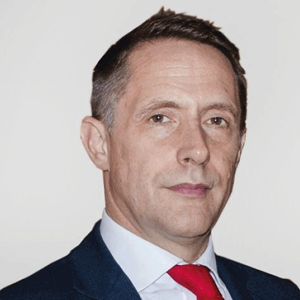Are digital and cryptoassets suitable investments for ultra-high- and high-net-worth individuals? Have private investors been discouraged by the intense recent volatility in bitcoin and other cryptocurrencies? And if they are committed to expanding into this emerging asset class, how should they set about constructing a digital portfolio?
At June’s Wealth Strategy Institute Summit, a number of industry experts shared their views on the potential of digital assets to transform global financial markets with OMFIF’s chief executive officer, John Orchard.
KEY SESSION HIGHLIGHTS
- Stefan Edelmann, executive director, asset management at Sygnum Bank, echoed private bankers who had spoken on previous panels, saying that investors considering exposure to cryptoassets should ask themselves two fundamental questions.
- First, where should digital assets fit into an investor’s portfolio – alongside equities, bonds or alternatives? Second, what are the investor’s return expectations? Do they believe in the growth potential of the market and want directional exposure? Or do they favour a less directional, yield-based strategy?
- Tim Jones, who led the development of Mondex digital cash when he was at NatWest in the 1990s, sounded a warning about governance in the cryptocurrency sphere. He described the crypto world as being ‘complicated and jargon-infested’. He added that it was most mostly unregulated and that, as cryptocurrencies were uncollateralised, trading was based entirely on trust.
- Marjan Delatinne, managing director, payments at SETL, agreed that cryptoassets are gaining in popularity as an asset class among large organisations, which are increasingly exploring their potential for hedging counterparty risk.
- Investors may be rewarded by being early-stage investors in companies that could one day be as big as Amazon or Microsoft.
- Speakers were generally favourable towards collateralised non-fungible tokens. One described this as a ‘space to watch’ for wealth managers, as it opens the way for HNWIs to take partial ownership of assets that would otherwise have been beyond their reach.
- However, views were mixed on whether blockchain has revolutionised financial markets as extensively as its most vocal advocates suggested it would some years ago. Some panellists argued that it is has yet to evolve into a rules-based, fully decentralised network. As Jones said, most blockchains remain permissioned networks based on a single point of control.
- Speakers agreed that digital assets will need a degree of governmental oversight if the market is to prosper, and win and retain the confidence of investors and other market participants. ‘At the moment it is still an experimental market,’ said Delatinne. ‘It needs to be institutionalised if it is going to survive. If we are going to move to a fully digital, on-chain world, central banks will need to be more involved.’
- This implies that monetary authorities will need to embrace central bank digital currencies, which many remain lukewarm about.
- Speakers agreed that the market is being strengthened on a continuous basis by increasingly robust infrastructure. Boris Bohrer-Bilotwitzki, chief revenue officer at Copper, said that technological change is injecting efficiencies that will replace outdated, legacy infrastructure and sweep away cumbersome and protracted settlement cycles. This will be especially welcome to investors in fixed income markets, where settlement cycles remain archaic.
Speakers:

Boris Bohrer-Bilowitzki
Chief Revenue Officer
Copper

Marjan Delatinne
Managing Director
Payments
SETL

Stefan Edelmann
Executive Director Asset Management
Sygnum Bank

Tim Jones
Executive Director
Tata Limited
Moderator:


